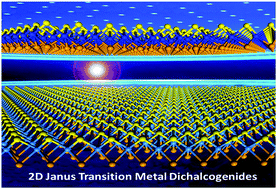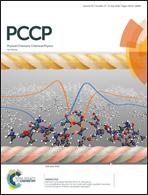Intriguing electronic and optical properties of two-dimensional Janus transition metal dichalcogenides†
Abstract
Atomically thin Janus transition metal dichalcogenides (JTMDs) with an asymmetric structure have emerged as a new class of intriguing two-dimensional (2D) semiconductor materials. Using state-of-the-art density functional theory (DFT) calculations, we systematically investigate the structural, electronic, and optical properties of JTMD monolayers and heterostructures. Our calculated results indicate that the JTMD monolayers suffer from a bending strain but present high thermodynamic stability. All of them are semiconductors with a band-gap range from 1.37 to 1.96 eV. They possess pronounced optical absorption in the visible-light region and cover a large range of carrier mobilities from 28 to 606 cm2 V−1 s−1, indicating strong anisotropic characteristics. Significantly, some monolayer JTMDs (e.g., WSSe and WSeTe) exhibit superior mobilities than conventional TMD monolayers, such as MoS2. Moreover, the absolute band-edge positions of the JTMD monolayers are higher than the water redox potential, and most JTMD heterostructures have a type-II band alignment that contributes to the separation of carriers. Our work suggests that the 2D JTMD monolayers are promising for nanoelectronic, optoelectronic, and photocatalytic applications.



 Please wait while we load your content...
Please wait while we load your content...